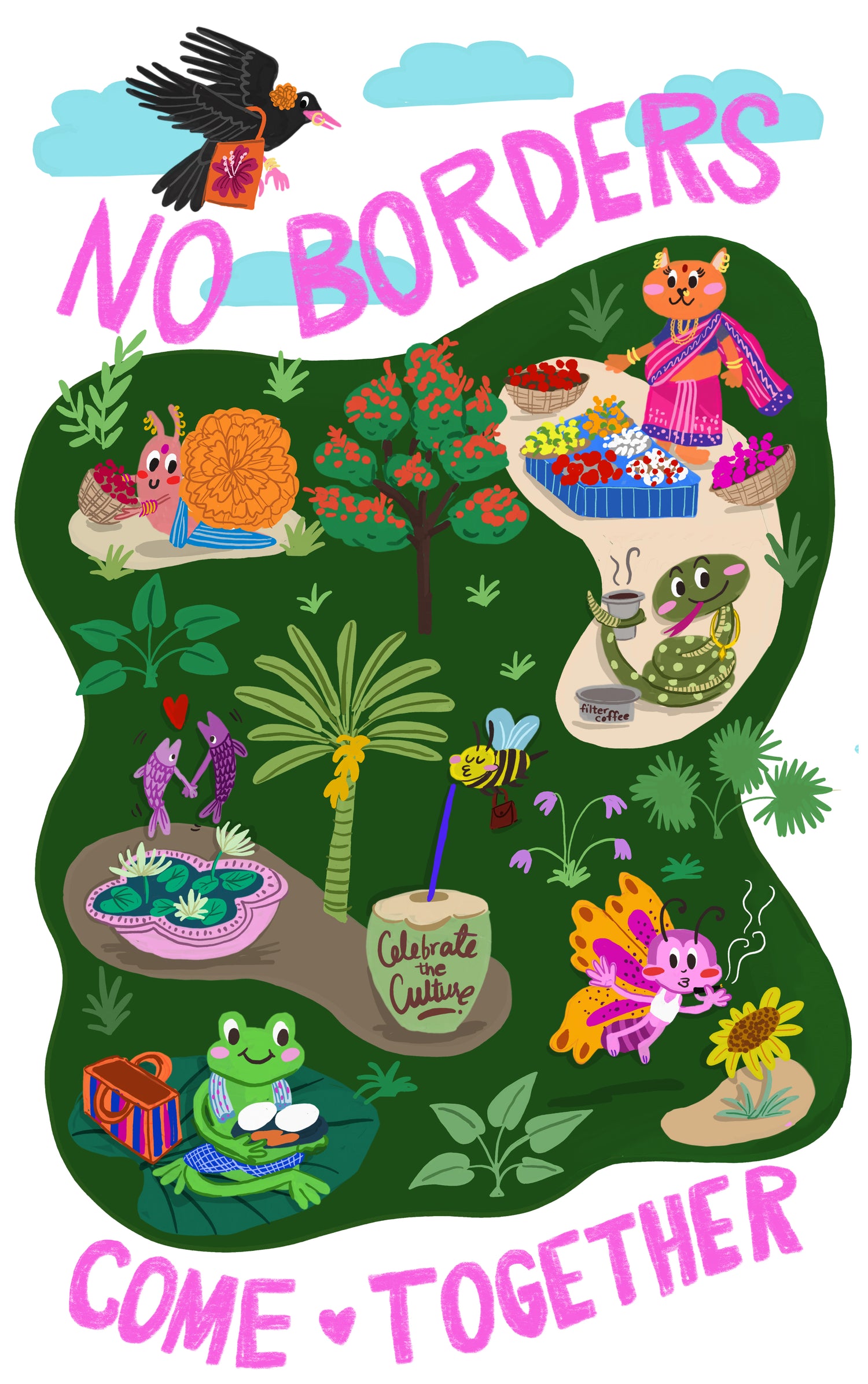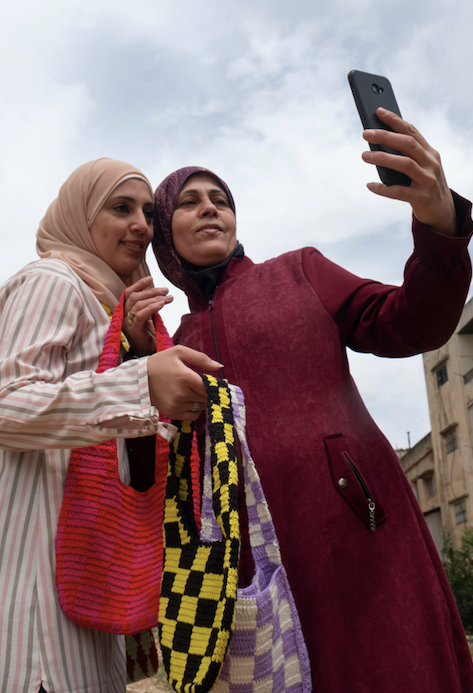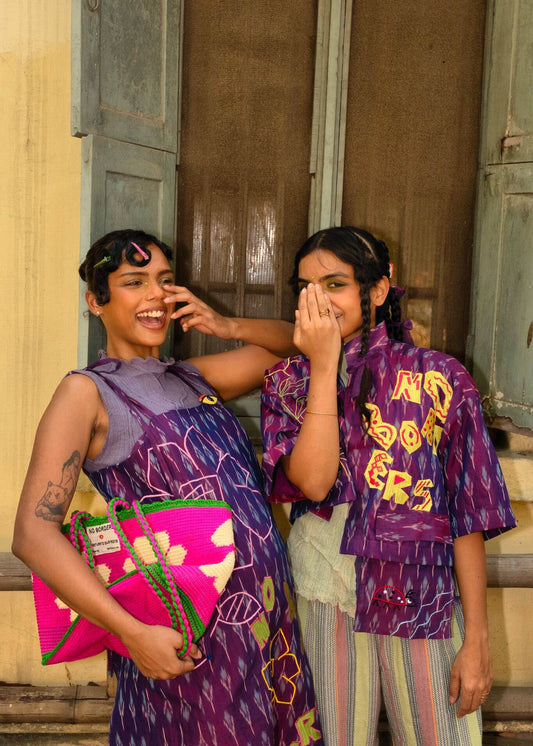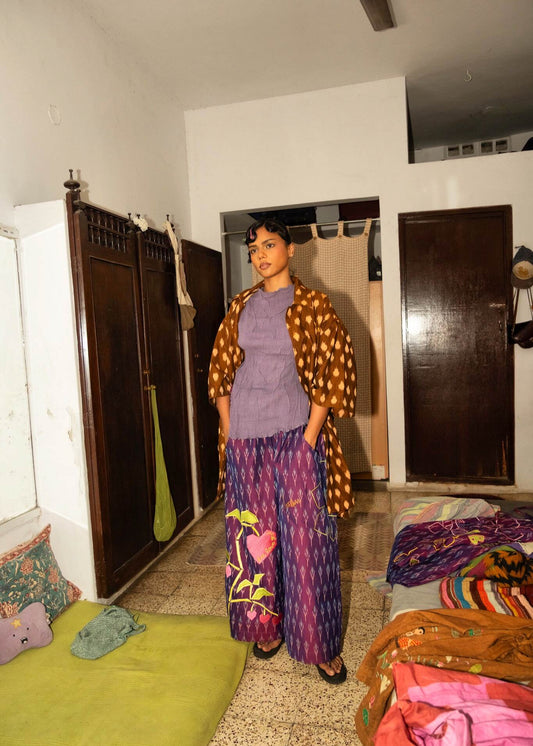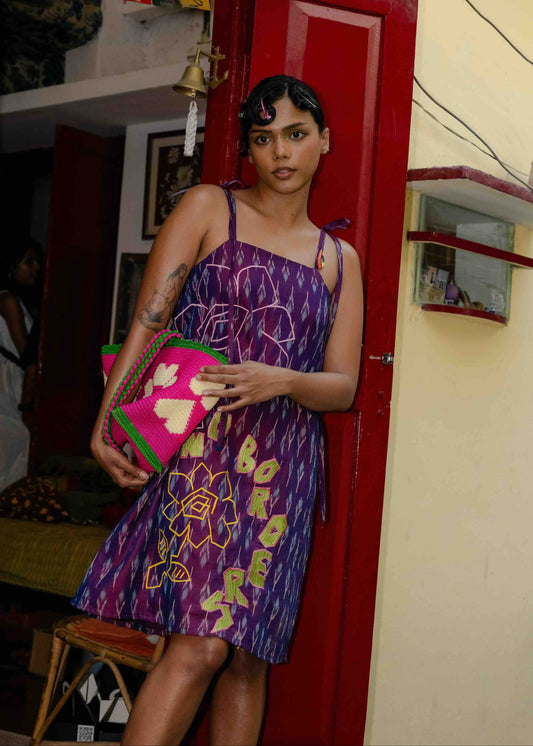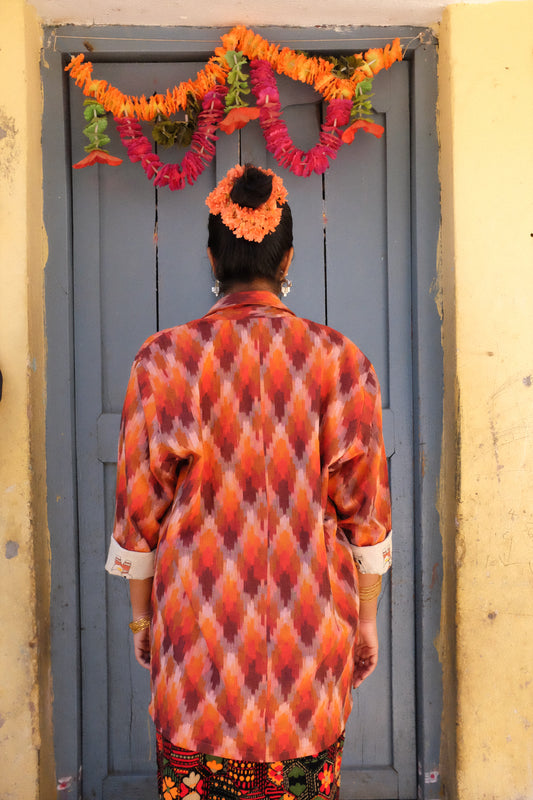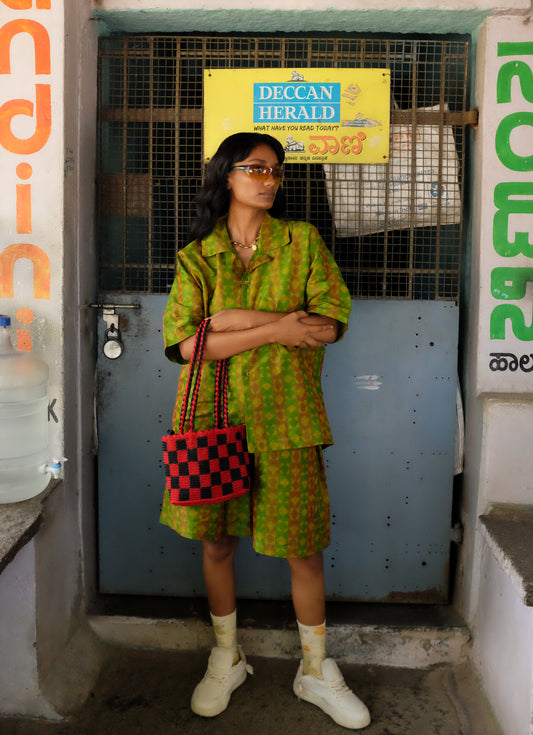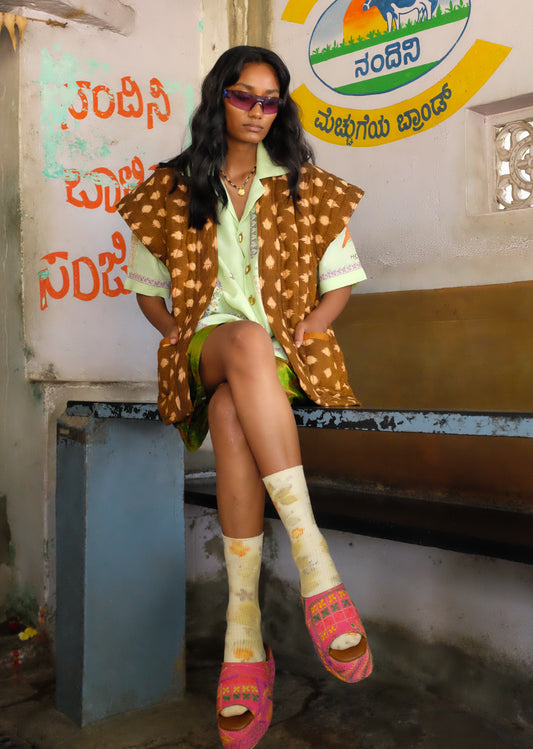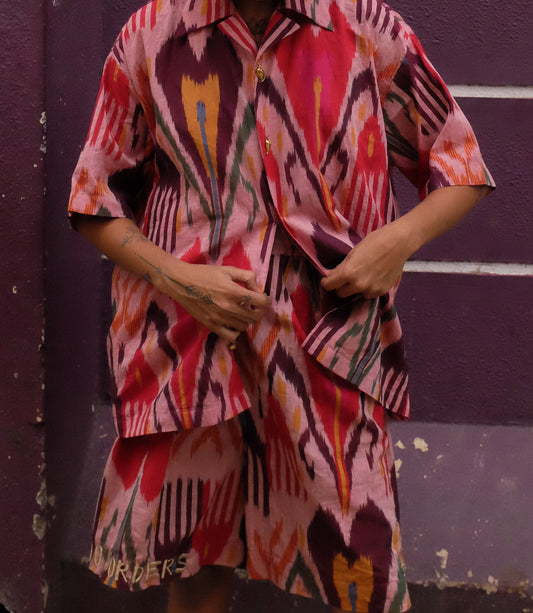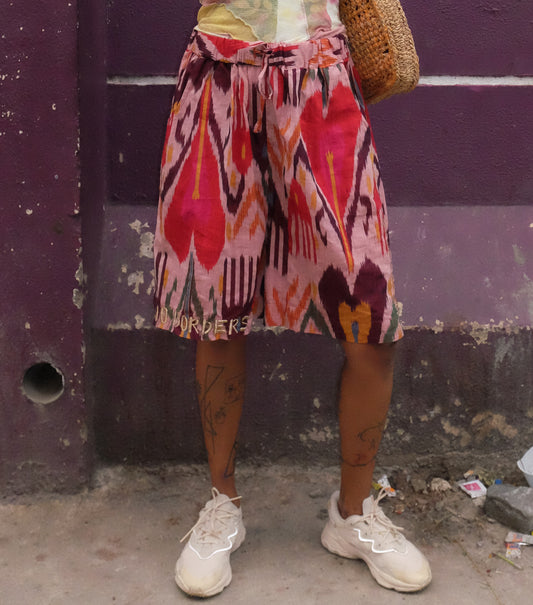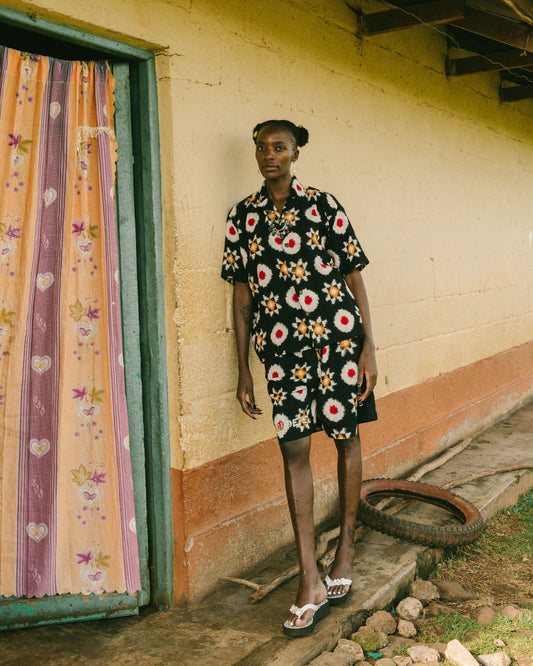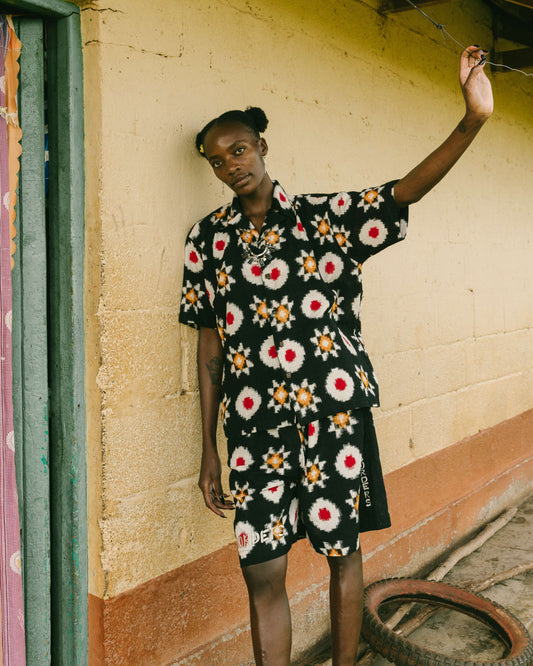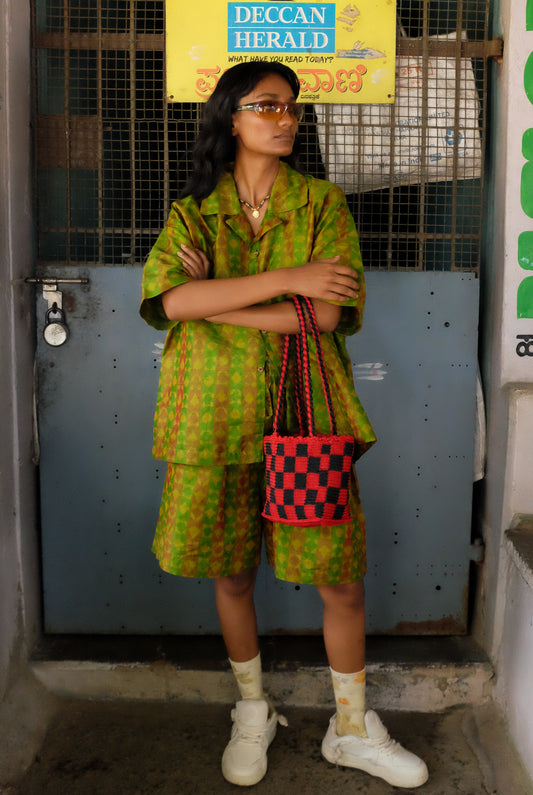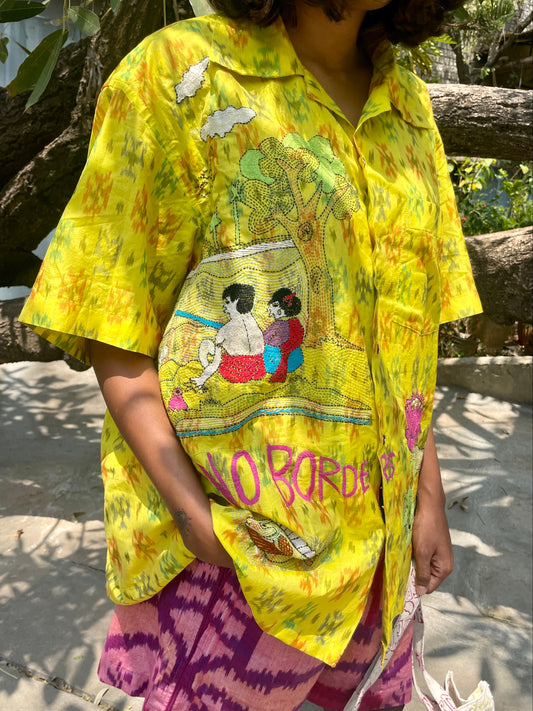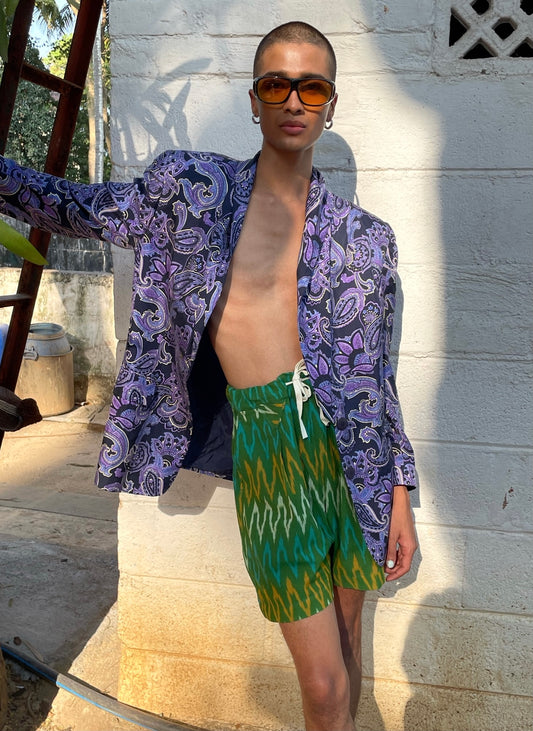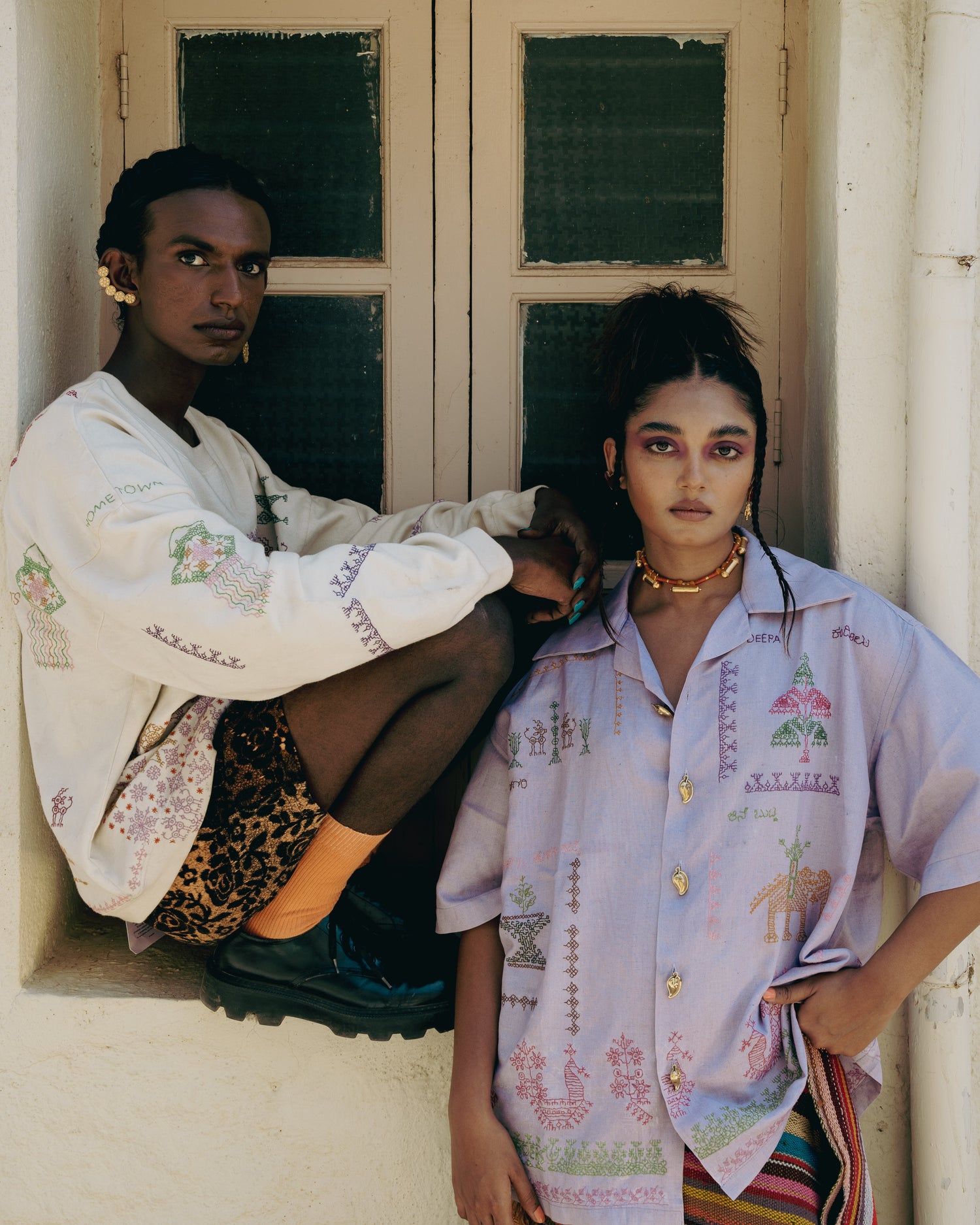Collection: NB x IKAT
We are working with Edem Chandana, an 18-year-old handloom weaver from Koyyalagudem, a village in the Yadadri district in Telangana- A State well-known for Koy's Ikat. Chandana generally weaves Ikat clothes and Tellya Rumal sarees and mostly works on designing the pattern for Ikkat, tie, and dye-related works which are associated with designing and colouring aspects of the saree. She also weaves sarees with natural dyes which are extracted from vegetables, leaves, and different types of fruits. Her father, Edem Srinath, received a National award for excellence in handloom saree weaving from the former president of India, Sri. Pranab Mukherjee for vegetable-dyed double ikat silk saree.
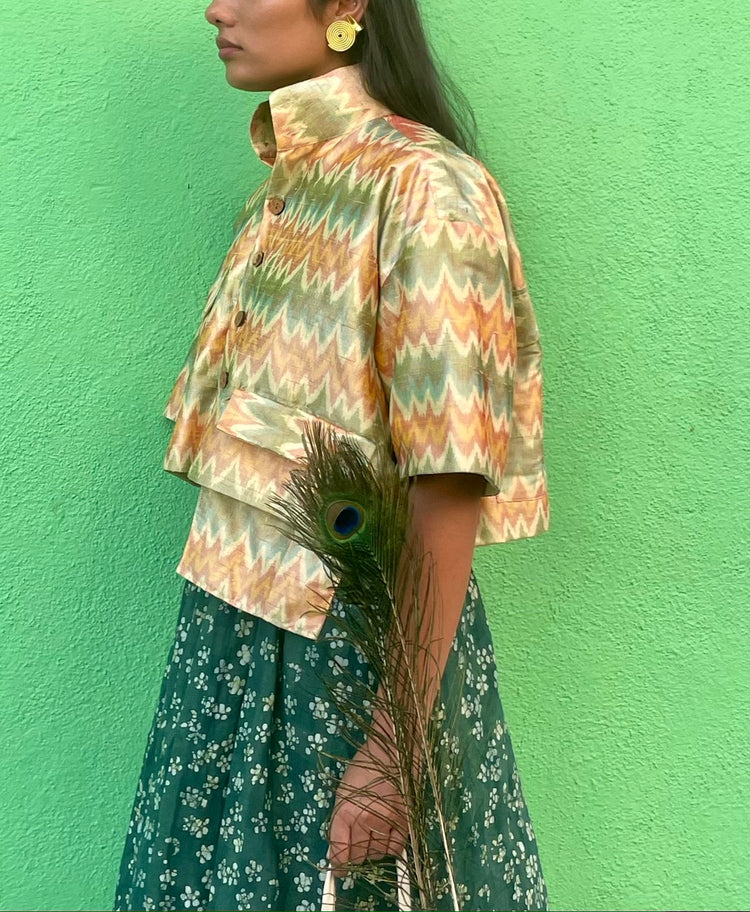
-
Let love grow Ikat crop shirt Vendor:
NO BORDERS SHOPRegular price From ₹11,000Regular priceUnit price / per -
Let love grow Ikat Pants Vendor:
NO BORDERS SHOPRegular price From ₹18,000Regular priceUnit price / per -
Let love grow Ikat Dress Vendor:
NO BORDERS SHOPRegular price From ₹16,000Regular priceUnit price / per -
Red Sand Ikat Jacket Vendor:
NO BORDERS SHOPRegular price ₹16,700Regular priceUnit price / per -
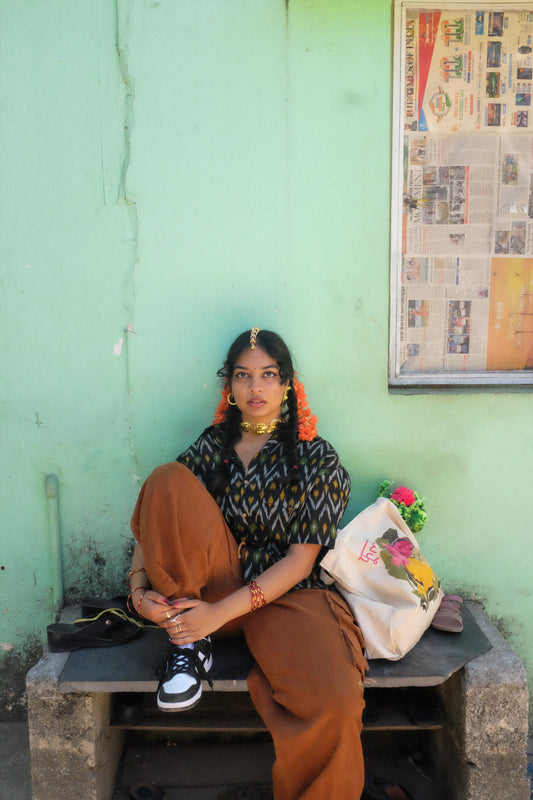 Sold out
Sold outBlack Ikat Shirt Vendor:
NO BORDERS SHOPRegular price ₹13,100Regular priceUnit price / per -
Ikat Multi-green Shirt Vendor:
NO BORDERS SHOPRegular price ₹26,000Regular priceUnit price / per -
Ikat Puffer Jacket Vendor:
NO BORDERS SHOPRegular price ₹18,365Regular priceUnit price / per -
Ikat Pink Hearts Shirt Vendor:
NO BORDERS SHOPRegular price ₹16,700Regular priceUnit price / per -
Ikat Pink Hearts Shorts Vendor:
NO BORDERS SHOPRegular price ₹13,500Regular priceUnit price / per -
Ikat Bindi Shirt Vendor:
NO BORDERS SHOPRegular price ₹16,000Regular priceUnit price / per -
Ikat Bindi Shorts Vendor:
NO BORDERS SHOPRegular price ₹12,000Regular priceUnit price / per -
Ikat Multi-green Shorts Vendor:
NO BORDERS SHOPRegular price ₹20,000Regular priceUnit price / per -
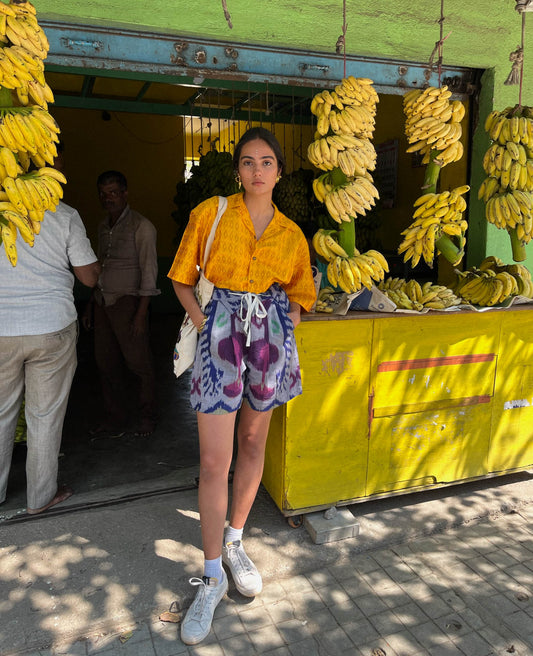 Sold out
Sold outBlue Ikat Shorts Vendor:
NO BORDERS SHOPRegular price ₹11,500Regular priceUnit price / per -
Ikat x Kantha Love-story Shirt Vendor:
NO BORDERS SHOPRegular price ₹14,000Regular priceUnit price / per₹18,000Sale price ₹14,000Sale -
Green Ikat Shorts Vendor:
NO BORDERS SHOPRegular price ₹12,600Regular priceUnit price / per -
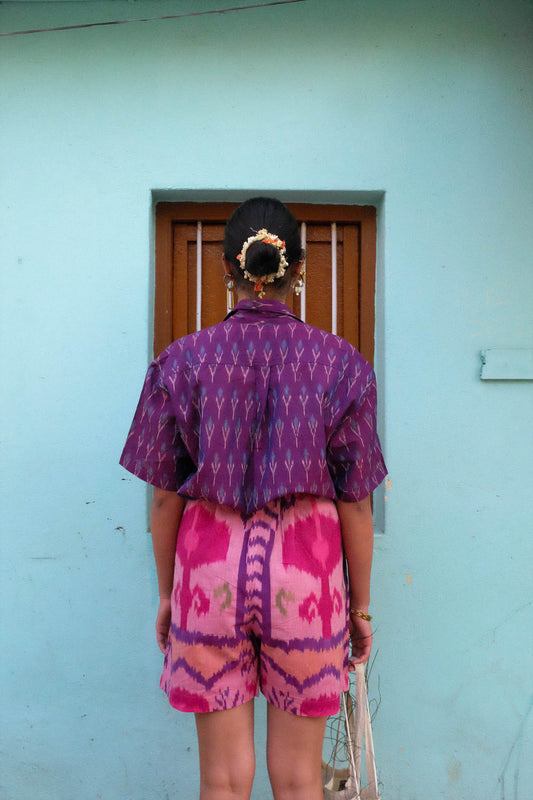 Sold out
Sold outPink Ikat Shorts Vendor:
NO BORDERS SHOPRegular price ₹11,500Regular priceUnit price / per
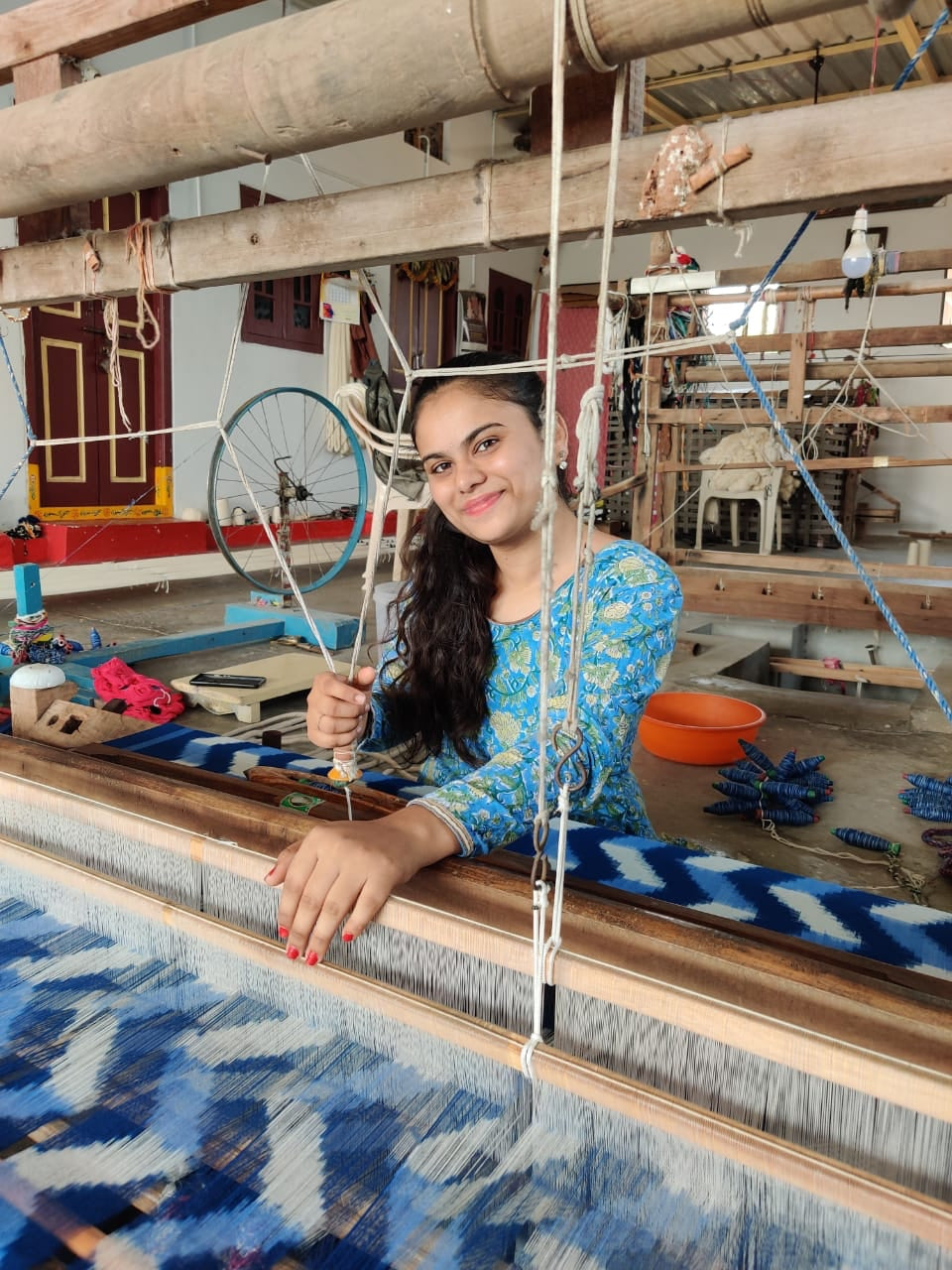
About the Craft
Ikat is one of the oldest textile dyeing techniques. It is most prevalent in Indonesia, India and Japan.
The resist is formed by binding individual yarns or bundles of yarns in the desired pattern, the yarns are then dyed. The bindings are then be changed to create a new pattern and the yarns dyed again with another colour. This process may be repeated multiple times to produce elaborate, multicolored patterns.
A characteristic of Ikat textiles is the blurriness to the design. The blurriness is a result of the extreme difficulty the weaver has lining up the dyed yarns so that the pattern comes out perfectly in the finished cloth.
shop other crafts
-
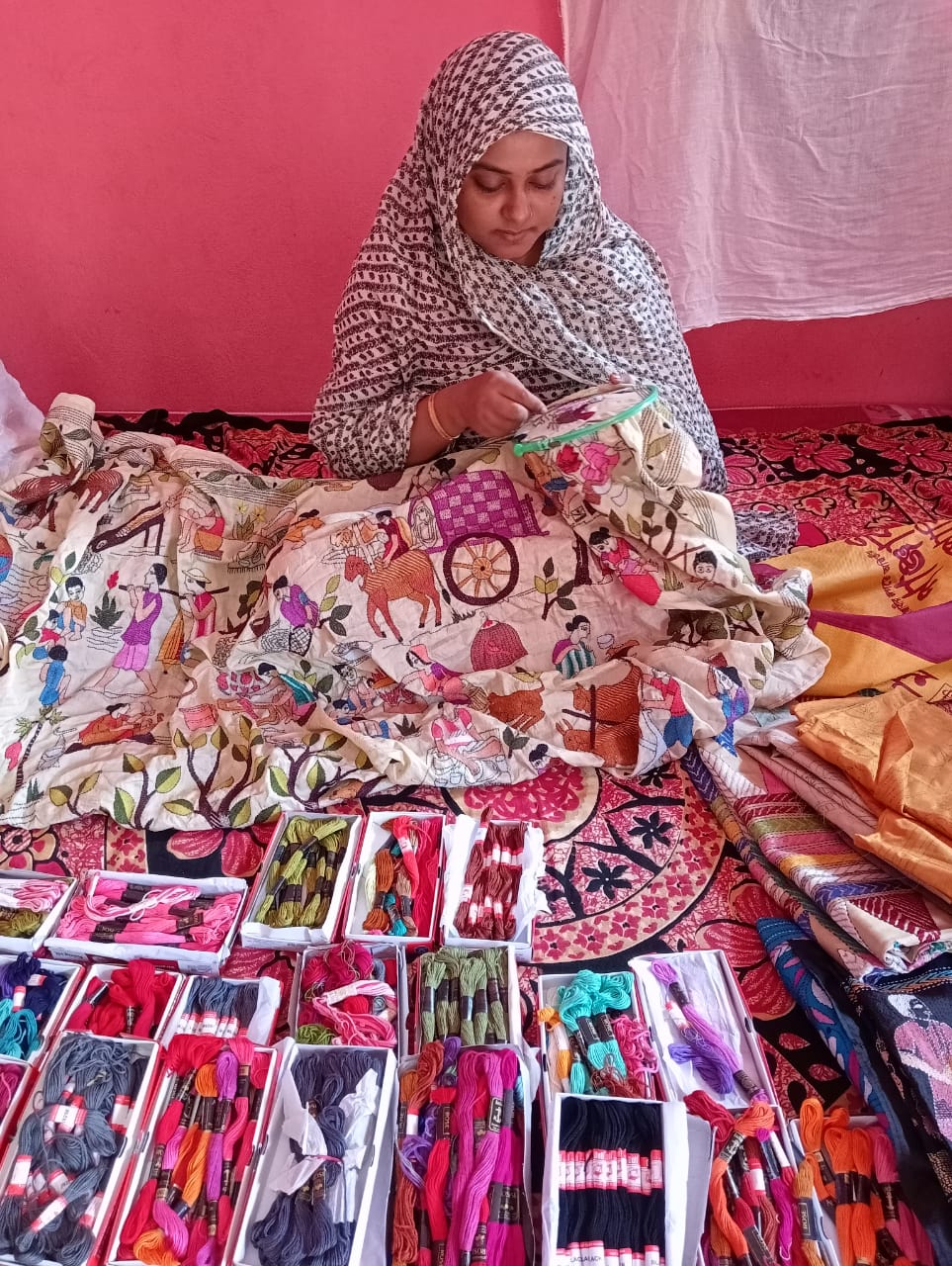
NB X KANTHA ARTISANS
Kantha is embroidered by hand, usually on cotton and silk quilts. The...
-
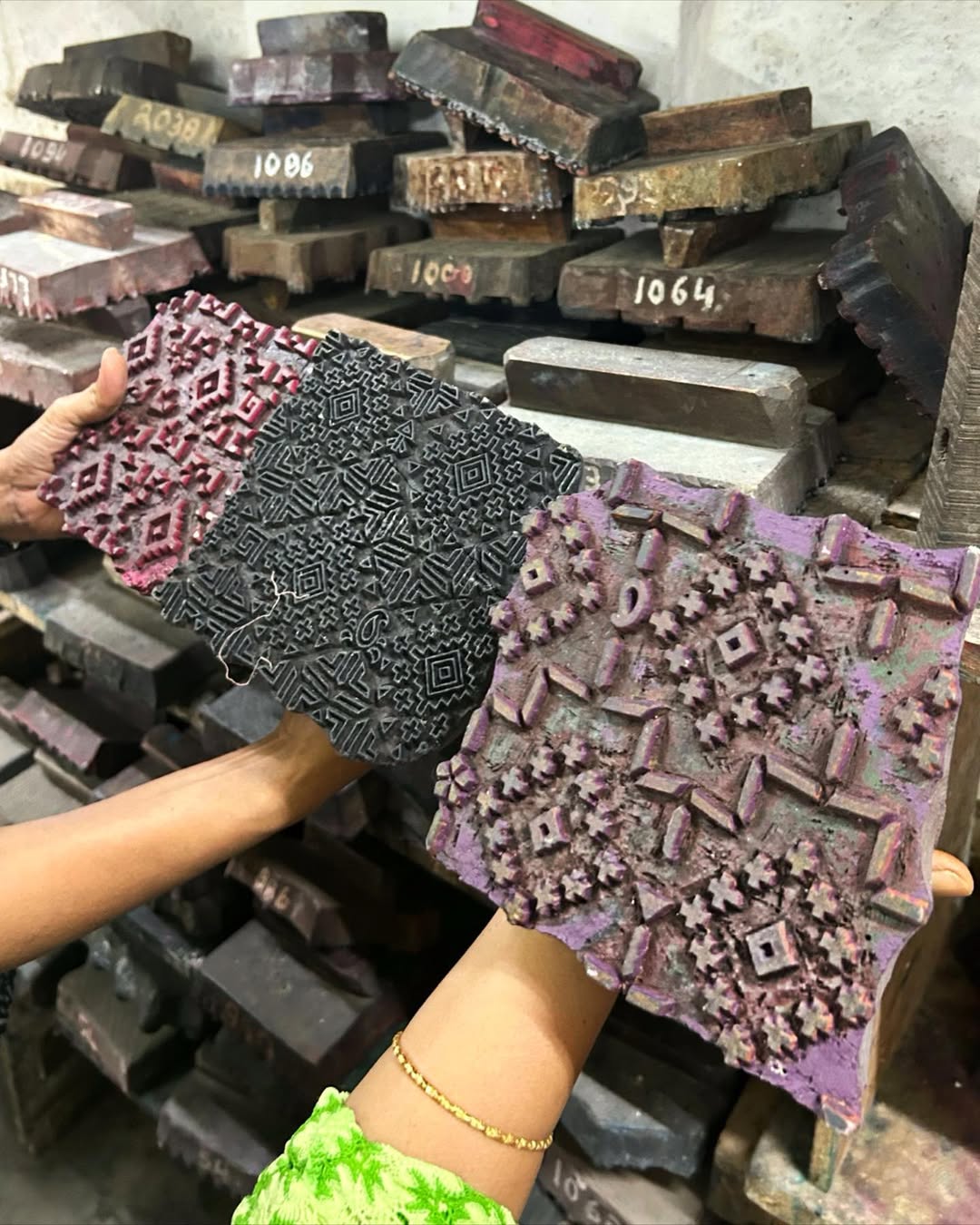
No Borders x Tharangini
Tharangini is a heritage wood-block printing studio founded in 1977 in Bangalore...
-
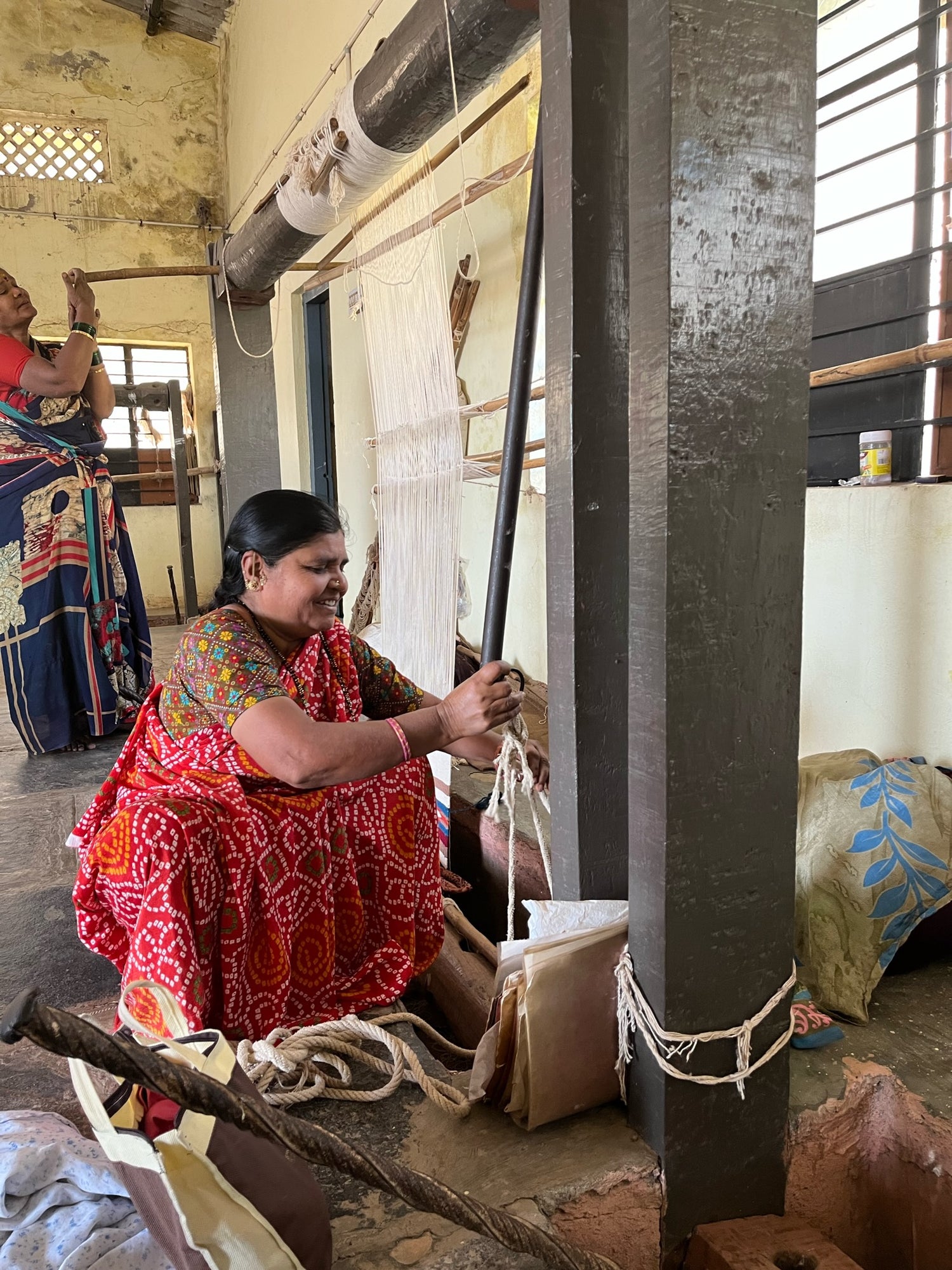
NAVALGUND DHURRIES
Navalgund Dhurries are made in a small town of the same name...
